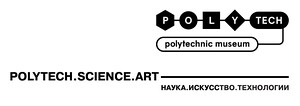Artists as Catalysts
June 22–September 25, 2016
The Polytechnic Museum and Ars Electronica Center with the participation of SilaSveta studio, present the project EARTH LAB—an exhibition of science, art, and technology experiments addressing the key issues of the modern life on our planet. Visitors are welcome to act as researchers and travelers on a journey of discovery along a parcours consisting of infographic sequences and experimental arrays, many of them interactive. The exhibition opened on June 22 and runs till September 25, 2016 at the former Red October chocolate factory in Moscow.
EARTH LAB conceives of Planet Earth itself as a laboratory in which every available square meter is dedicated to research on a broad spectrum of topics. What sort of noise does the Earth make, how does its “pulse” sound, and why is it revolving slower and slower? Might artificial leaves counteract the increasing pollution of our air, and could flies be the garbage-busters of the future? And speaking of flies: Why aren’t we snacking on insect bars now that nutritional as well as environmental considerations suggest that this is the way to go. And in light of the fact that the number of cells that make up the human body is only a tenth of the number of bacteria in and on it, then is it perhaps the case that microorganisms are what ultimately govern the human species? There are so many questions to answer as we go about advancing our basic understanding of processes at work on the Blue Planet.
Indispensable for such understanding are unconventional new (thought) experiments. And who could be better suited to taking leave of well-trodden paths than artists, who work on concrete solutions to problems but also call the R&D enterprise itself into question and thereby shed light on why we know so much about some things and so very little—or even virtually nothing—about others.
Participating artists are ART SAT (Japan), ::vtol:: (Russia), Búi Bj. Aðalsteinsson (Iceland), Sonja Bäumel (Austria), Massoud Hassani (Afghanistan/Netherlands), Cornelia Hesse-Honegger (Switzerland), Dmitry Bulatov and Alexey Chebykin (Russia), Julian P. Melchiorri (Italy/UK), Kono Michinari / Takayuki Hoshi / Yasuaki Kakehi (Japan), Yulia Glukhova (Russia), Ursula Neugebauer (Germany), Leo Peschta (Austria), STAIN (Russia), Finnbogi Pétursson (Iceland), Vadim Kolosov (Russia), Shinseungback Kimyonghun (Hong Kong) and Marek Straszak (Poland). The exhibits also include projects created under the auspices of the European Space Agency (ESA) and Ars Electronica Linz (AEC).
Curators of the exhibition—Manuela Naveau (Ars Electronica Center, Australia) and Natalia Fuchs (Polytechnic Museum, Russia)—introduce a wide range of issues engaging contemporary artists, as well as scientists, and technology developers. An additional section of the exhibition is dedicated to Russian artists with their new artworks—participants, winners or nominees of Prix Ars Electronica of various years and young promising artists carefully selected during a special Russian comission.
Natalia Fuchs, curator of the Polytechnic Museum in Moscow, on the collaboration with Ars Electronica: “We have come a long way to begin this partnership with the Ars Electronica Center, and I am very glad that it was the Polytechnic Museum that succeeded in reaching strategic agreement. We are knit together by the ideas of public education, science and technology communication, as well as the purpose of creating a platform for free thought and experimentation not only for professionals, but for all people, visitors of our exhibitions, lectures, and special events. In the context of the EARTH LAB project, I feel deeply attached to its idea of rethinking our planet as a laboratory in a creative way, and also to the artists whose works were selected for the exhibition.”


